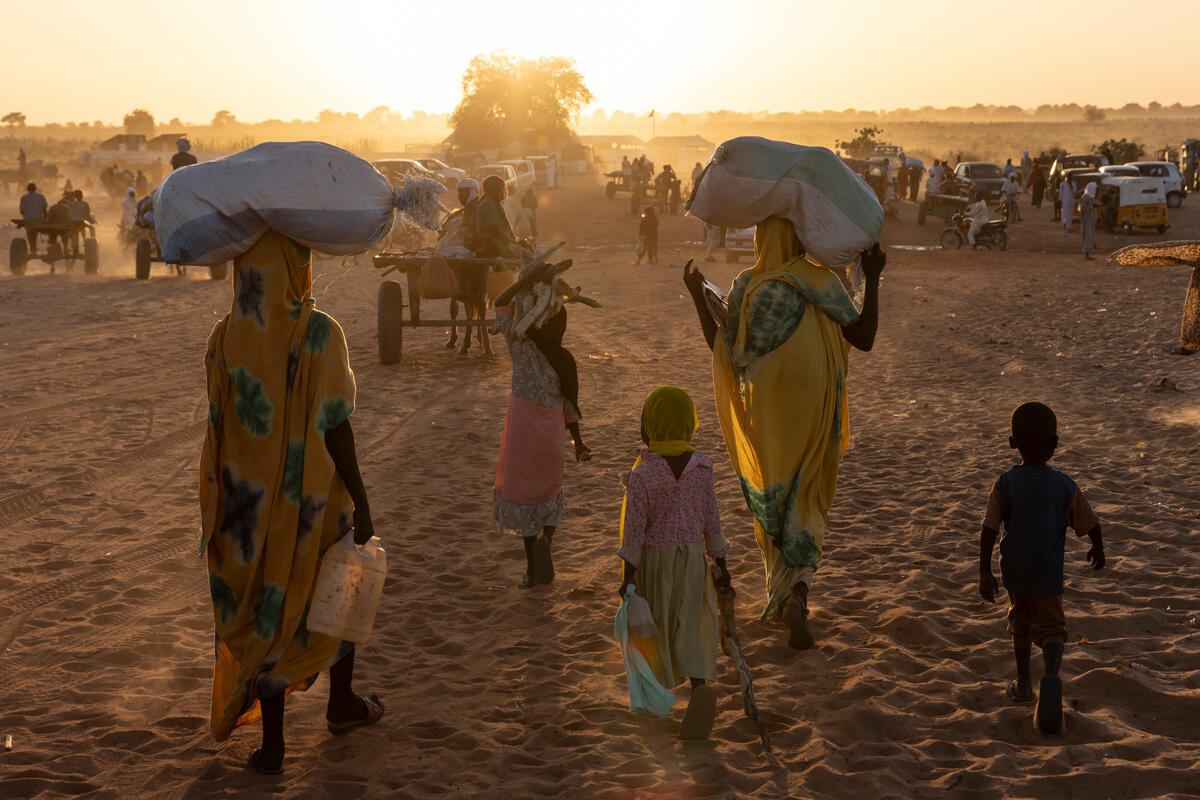Unrelenting violence in Sudan drives continued refugee exodus
Unrelenting violence in Sudan drives continued refugee exodus

Newly arrived Sudanese refugees in the border town of Adre, Chad.
The continuing bloodshed in Sudan has created the world's worst civilian protection crisis in decades – and the world is not paying any attention.
This week we reached a devastating milestone. Since the war broke out 19 months ago, over 3 million people have been forced to flee Sudan, seeking safety in neighbouring countries and further afield. It has been over a year and a half of unimaginable suffering, brutal atrocities and widespread human rights violations. Every minute, thousands of lives are shattered by war and violence, away from the world's attention.
The exodus from Sudan continues, reaching levels not seen since the beginning of the crisis. In October alone, some 60,000 Sudanese arrived in Chad following an escalation of fighting in Darfur and the retreat of floodwaters.
People are arriving in desperate conditions, carrying nothing but memories of unimaginable violence they witnessed and survived – things no one should have to endure.
Civilians are paying the highest price in this violent conflict. Those who managed to escape to Chad have recounted the atrocities: civilians terrorized, houses looted, people and animals killed. Many have been forced to watch their loved ones murdered. People have been targeted on the basis of their ethnicity; men and boys killed, and their bodies burned. Women have been raped while fleeing. Many people remember the bodies they saw abandoned by the road as they fled on a dangerous and inhumane route to safety.
A staggering 71 per cent of refugees arriving in Chad report surviving human rights violations in Sudan while fleeing. The levels of trauma are devastating, with families in shock after fleeing the horrors, still living in fear despite being in relative safety.
Countries in the region are doing their part, but the needs are immense in many host countries, whose populations already had enormous humanitarian needs. Neighbouring countries are feeling the pressure; national facilities are collapsing under the strain of continuous arrivals.
Chad has become a lifeline and sanctuary for more than 700,000 Sudanese refugees – the majority of them women and children – forced from their homes since the outbreak of the brutal and indiscriminate war in Sudan. This is the largest refugee influx in Chad’s history, and it adds to the more than 400,000 Sudanese who already lived in protracted displacement in the east, bringing the total Sudanese refugee population in the country to over 1.1 million.
Adre used to be a small border town of 40,000 people, but its population has increased sevenfold to now host 230,000 Sudanese refugees, many of whom spend months in harsh conditions, waiting to be relocated inland.
Despite efforts, the health-care system is threadbare with only one doctor for 24,000 patients – far surpassing the emergency standard of one doctor per 10,000 people. Access to water is inadequate. Education remains a top priority for families, but most children have been out of school for nearly two years. Food in Sudan is scarce, and more children are crossing the border malnourished.
Other neighbouring countries, like Egypt, which is the largest host with 1.2 million new Sudanese refugees according to the latest government figures, have gone above and beyond their means, providing safety for people to flee, and ensuring children can go to school, giving refugees the right to work, start new businesses and the chance to contribute to the communities hosting them.
Ethiopia is setting up integrated settlements with the support of development donors, strengthening existing social services for Sudanese refugees and their hosts, while Uganda is providing new arrivals with documentation so they can use their education and skills to boost local economies. In the Central African Republic, Sudanese refugees have been allocated arable land for them to cultivate.
In Libya, local communities, including Sudanese that have been in the country for many years, have shown solidarity and support to tens of thousands of Sudanese refugees. Among the 3 million people who have fled the violence in Sudan, 650,000 of them are South Sudanese returning to an extremely fragile country with enormous humanitarian needs. Nevertheless, we are working with the authorities and development actors to improve conditions in the communities receiving them.
This is one of the largest emergencies in the world, yet among the least reported and funded. Without substantial financial support from the international community, social cohesion and regional stability will be endangered and millions will face hardship. The Regional Refugee Response Plan for Sudan is just 29 per cent funded out of the $1.5 billion required by 86 partners.
For more information on this topic, please contact:
- In Nairobi (regional), Faith Kasina, kasina@unhcr.org, +254 113 427 094
- In Dakar (regional), Alpha Seydi Ba, baalp@unhcr.org, +221 773 457 454
- In Geneva, Olga Sarrado, sarrado@unhcr.org, +41 797 402 307
- In Geneva, William Spindler, spindler@unhcr.org, +41 79 5495998








